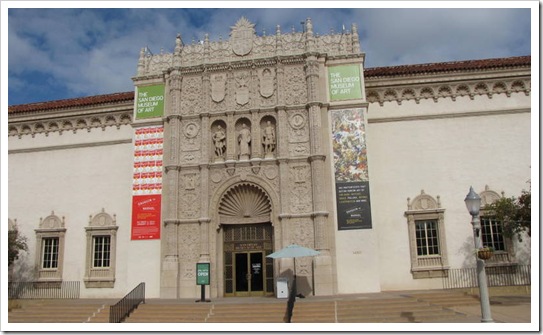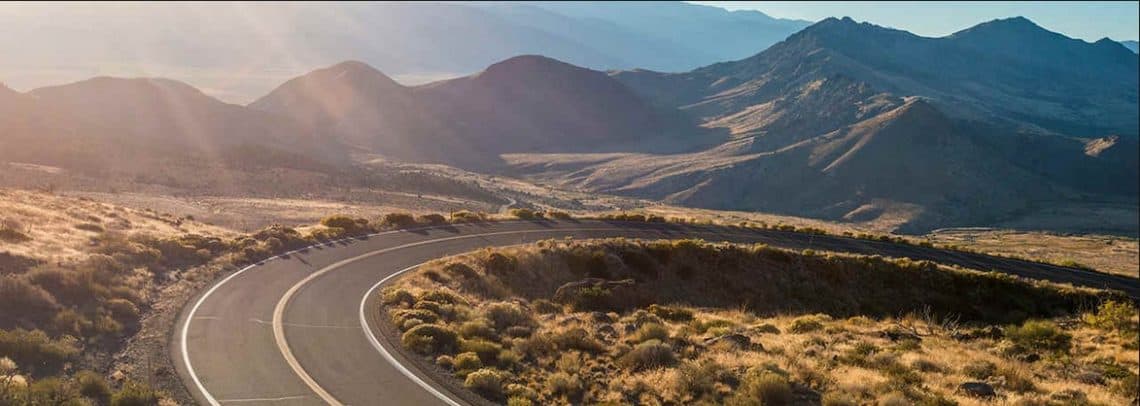It was billed as my “2014 Winter SoCal Adventure,” and I had been planning it since last spring. I would drive south for a week of urban camping in John and Cathy’s guest room, bird watch in lagoons, visit a museum, admire architecture, splosh around in tide pools and look for anemones to tickle, reconnect with Jo whom I have not seen in 30 years, be treated to dinner, leave the city, kayak on an inland sea, live a cushy condo life for five days, become familiar with the romance and sex life of dates, hike to desert oases, and spend Christmas Day bird watching once again. By the time it was all over I would have been gone for ten days, put away some serious fermented grape beverage, added 1,420 miles to my car’s odometer, and experienced the best vacation I have had in years while wearing a custom–made Santa Claus hat.
 |
| Two poinsettia earrings hang from my “jade plant cuttings in plastic cup” Christmas tree |
One day J&C and I decided to spend a few hours at Balboa Park, perusing some exhibits at the San Diego Museum of Art. I live in a town where cosmopolitan cultural offerings are at best minimal and at worst nonexistent, so it was a thrill for me to visit a real big city museum.However, it did not take me long to realize that the early 20th century architecture here was as captivating as the 14th century paintings I had come to see.
 |
| San Diego Museum of Art in Balboa Park |
 |
| Architectural detail |
Balboa Park is one of the oldest urban parks in the United States; it was set aside for public recreation in 1835. It hosted the Panama–California Exposition (1915–1916) which celebrated the opening of the Panama Canal, and the California–Pacific International Exposition (1935–1936) which helped to promote San Diego and support its economy in the wake of the Depression. Today, Balboa Park and its historic Exposition buildings are on the National Register of Historic Places.
 |
| Casa del Prado |
 |
| Arch along El Prado Arcade |
 |
| El Prado Arcade |
I had visited the San Diego Zoo decades ago and other parts of Balboa Park a couple of years ago. However, I had no clue about the historic aspect of what is known as the El Prado Complex. What a treat it was to discover a little about its history and absorb the grandeur of its architecture.
 |
| Arcade |
 |
| Botanical building with reflecting pool |
 |
| Tower detail |
Some of today’s structures remain pretty much as they were in 1915 except for structural repairs. Others are built on the sites of exposition buildings that were meant to be temporary and so were demolished. The San Diego Museum of Art, for instance, was built in 1926 as the Fine Arts Gallery. It is located on the site of the exposition’s Sacramento Valley building that, being a temporary structure, was demolished in 1924. Except for repairs, the El Prado Arcade has remained unchanged since 1915.
 |
| Prado courtyard |
 |
| My urban camping hosts! |
 |
| Casa de Balboa |
Supervisory architect Bertram Goodhue and assistant Carleton Winslow were responsible for mixing ornate elements of many architectural styles in their designs for the buildings of the Exposition. Mission Revival, Spanish Baroque, Spanish Colonial and Moorish Revival architecture along with Mexican Churrigueresque ornamentation coalesced into a mélange of influences that at San Diego proved popular enough to earn its own name: Spanish Colonial Revival.
In 1910, San Diego had a population of around 37,500 inhabitants and Balboa Park was primarily open space. However, the landscaping and building completed for the Exposition transformed the Park into an important cultural center that today houses San Diego’s major museums. In conjunction with the Centennial observation, for the first time since 1935 the California Tower will be open for public tours starting in January 2015. Hidden staircases, a seven–floor ascent, and finally a climb up a spiral stairway will present to the 21st century visitor views of the southern California landscape that the 1915 Exposition participant might hardly recognize.
 |
| California Tower |
 |
| California Tower with arcade and dome |




















